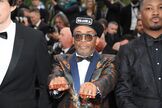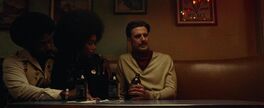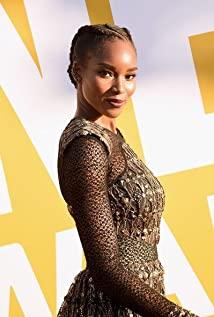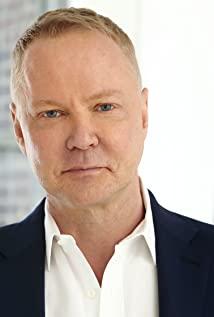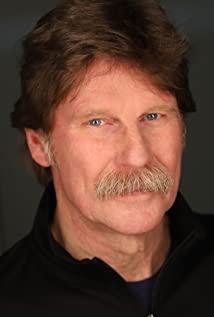Spike Lee's "BlacKkKlansman" may be in the top five in Uncle FUN's viewing TOP this year.
Since it was nominated for the Palme d'Or in May this year, Uncle FUN has been looking forward to it, and finally finished watching it a while ago.
The tone of the whole film is actually more comedy, but hidden under the shell of comedy is the questioning of history and the resistance to reality .
The film is based on the biography of the same name published in 2014 by American undercover cop Ron Stallworth. Ron, a black police officer in a small town, got through the recruitment call of the KKK with a prank mentality, imitating a white accent and telling that he hated black people so much that he did not expect to successfully join the KKK. In order not to reveal his identity, the Jewish white police officer Philip disguised himself as Ron and broke into the Ku Klux Klan to gain their trust. As the undercover mission progressed, they not only approached KKK leader David Duke, but also discovered a planned bombing.
Pier Jordan, who directed last year's "Get Out," won the rights to adapt the novel, but he later handed over the guide to Spike Lee and became a producer himself.
"Get Out" tells the story of a group of white people who are eager to replace their bodies with black people. "Black skin and white heart" alludes to the hypocrisy of the current affirmative action movement. "Black Klansman" is a story of "white skin and black heart". Philip's entity and Ron's thoughts together form a fictional image of Ron, which strongly satirizes the evil and absurdity of the KKK.
On set, with Spike Lee on the left
Spike Lee, who film critic Roger Ebert dubbed a "born filmmaker," began making black films with strong irony while still in college. His student short film "The Answer" was almost forced to drop out of school for satirizing DW Griffith.
And in "BlacKkKlansman," the irony reaches a peak.
In the film's climax, the Klan gathers to watch Griffith's well-known and infamous "Birth of a Nation," while black gangs hold rallies to reveal the history of the Holocaust. The two assemblies are edited together in a parallel montage. On one side is the heavy historical traceability, on the other side is the carnival of racist demons; on the other side is White Power and the other side is Black Power, which is extremely ironic and visually stunning.
"The Birth of a Nation" was completed in 1915, costing $500,000, a total of 12 copies, and a 3-hour film. It was the first true feature film in American film history. Before that, while Italian epics were popular all over the world, Hollywood was more optimistic about short films.
On March 3, 1915, the film was released in New York, with a very high sales rate, 620 consecutive screenings, continued to be released for 15 years , and the audience reached 100 million. Making melodramas and epics the most lucrative movie genres in Hollywood.
"The Birth of a Nation" conquered critics and audiences alike with his superb artistry and rich imagination . Griffith is considered to have truly mastered the tool of film, and he was able to obediently arrange each shot to produce strongest effect. He took editing principles to new heights, creating parallel montages . The cultural world frantically praised the achievements of "The Birth of a Nation", which made Griffith the first film master.
However, it is a tainted masterpiece.
The film recalls the Civil War, the destruction of the South, and the Ku Klux Klan's efforts to restore the South's honor and punish black people. The film vigorously promoted the inferiority of black people and portrayed the Ku Klux Klan as a hero, causing growing social controversy, and seven states banned it. The KKK, which had disappeared, also made a comeback in the same year.
As an anti-Griffith film, the parallel montage in "BlacKkKlansman" has caused a lot of controversy . They believe that since Lee opposed Griffith, he should not use the parallel montage invented by Griffith, but should abandon the mainstream and create his own new method like Godard.
But for Lee, countering his sinister racist views with Griffith's cinematic language is what he wants to achieve .
In fact, the inventor of parallel montage is Griffith, and it is likely the result of people's wishful thinking.
In the 1910s, most of the film films were destroyed after release and became the raw material for making stockings, and very few films survived. Who can prove that before The Birth of a Nation, there were no works that used parallel montages among the thousands of destroyed films?
At that historical node, it was the evil racism in "The Birth of a Nation" that catered to people's malice toward black people, incited people's panic toward black people , and made it visible to more people.
Another famous recent satire of the KKK and Griffith may be Quentin Tarantino's Django Unchained . It is also a film that reflects on history under the appearance of comedy. In the film, the Ku Klux Klan was about to launch a charge to slaughter black people, but some members complained that the design of the headgear was too inhumane, which hindered his vision of penetrating the battle situation and blocked his handsome face.
"Django Unchained"
In interviews, Quentin has repeatedly spoken out about his distaste for The Birth of a Nation and John Ford .
"I think the revival of the Ku Klux Klan and the amount of blood that ran across America up until the early '60s is to blame for this movie... As the son of a Confederate officer with blood on his hands, how Griffith bemoans the times It's his own business to see how he can't stand the improvement of the status of black people. He can sit on the rocking chair in front of his house and talk nonsense. Who cares? But he chose to pay for it out of his own pocket and made such a movie 365 days in a row. , that's another story."
Quentin Tarantino
Ford disgust is derived from the Ford played a 3K gang members in the "Birth of a Nation" in . He said: "Why did Ford play the role? He couldn't have been unaware of the significance of the play. The novel The Kindred (the original novel of The Birth of a Nation) was a popular read at the time, and the play of the same name toured across the country. It's not bad. In this case, he chose to put on the KKK uniform, get on the horse, and desperately perform the scene of suppressing black people. So I thought, if he rode so fast and so desperately, the white hood would definitely shift, and he would watch There's nowhere to go, so that's why he's doing that (there's a scene where Ford lifts his hood). And that's where the characters in my film come in."
He believes that Ford "killed Indians like zombies without giving a face" on the screen; "The reason why white supremacy has survived so long, the reason why it still exists in the movies of the 1950s is because of John. People like Ford".
Of course, he overlooked the fact that John Ford was of Celtic descent, immigrated to the United States, and was originally an oppressed group.
"Django Unchained"
But what's interesting is that the two great directors who have always liked to satirize American racism in their films actually hate each other. Li believes that "Django Unchained" "jokes" the tragic experience of black slaves, which is an insult to black ancestors. Quentin, on the other hand, believed that Lee "should keep his mouth shut."
As told in "BlacKkKlansman" (the film is set in the 1970s), the diabolical actions of the Klan are not only historical, the Klan leader David Duke in the movie is still active today, even giving speeches in public , affecting American politics.
At the end, Lee directly slides the film into the present, telling the audience with a real speech by Trump that the KKK has not died out, but has grown stronger in the new era.
This article was originally created by Hot FUN, welcome to pay attention and grow knowledge with you
View more about BlacKkKlansman reviews



